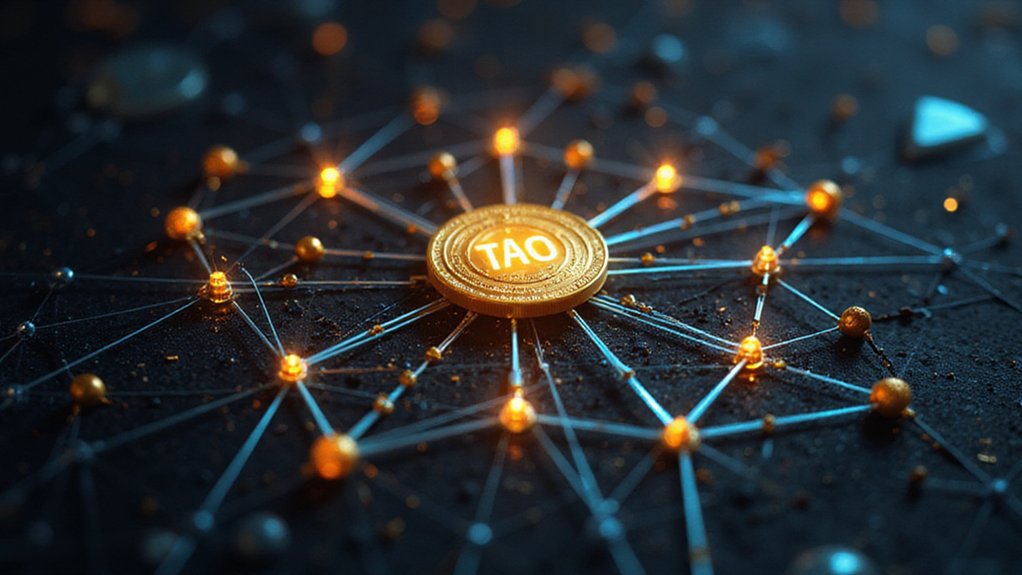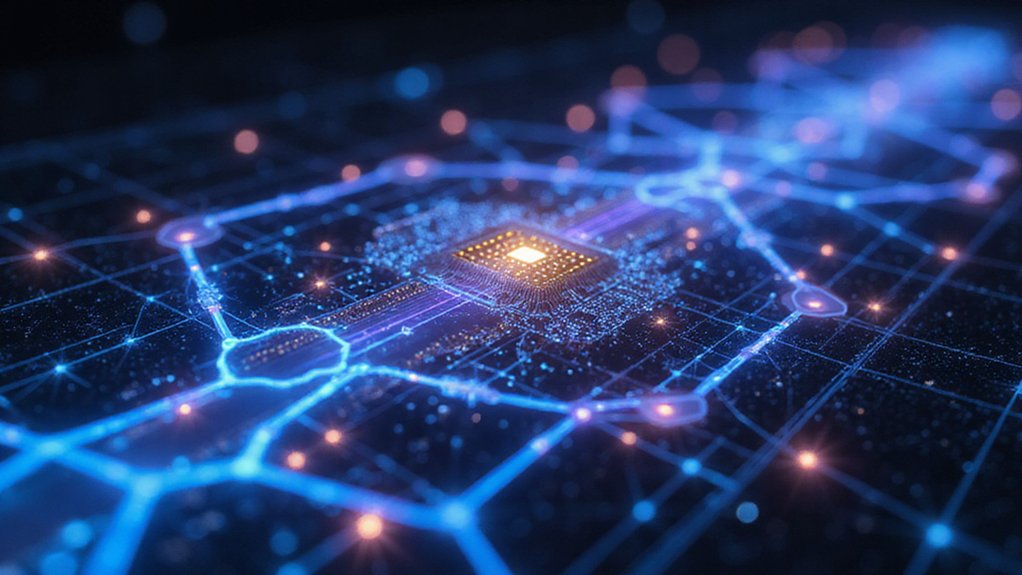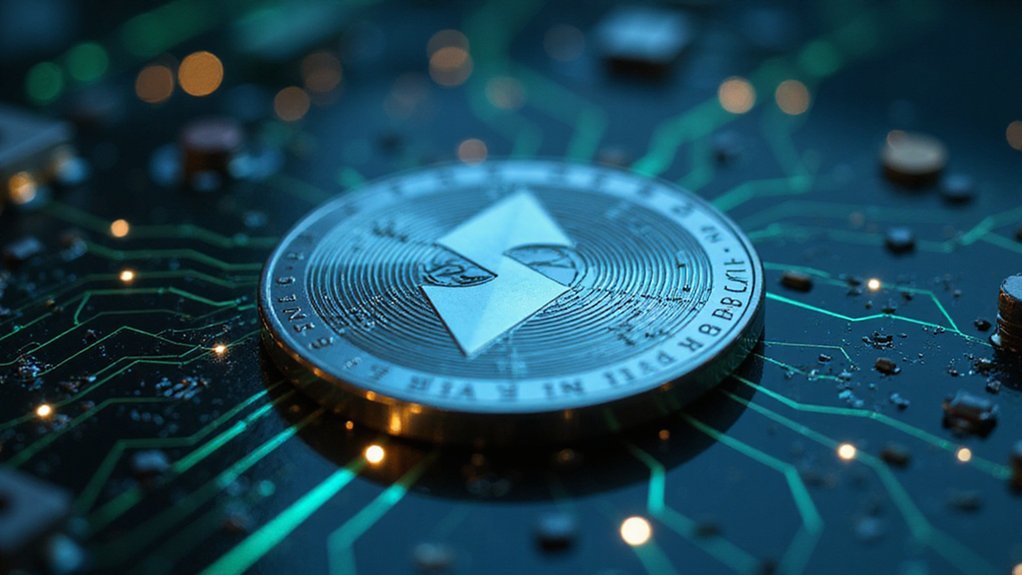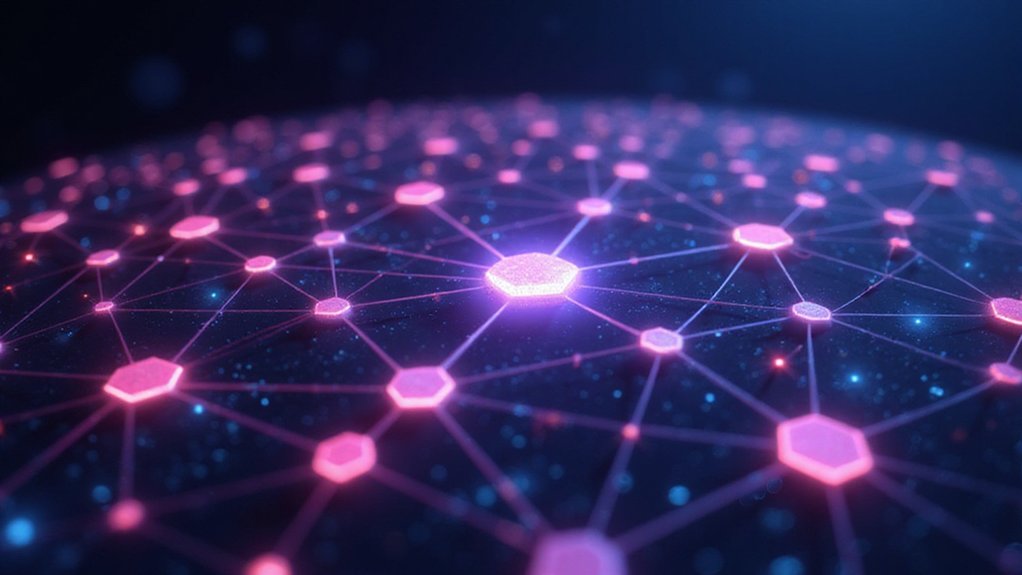Bittensor operates as a decentralized blockchain network transforming machine learning models into tradable commodities within a peer-to-peer marketplace. This open-source protocol, built on the Subtensor blockchain, comprises specialized subnets addressing various AI tasks under a unified TAO token economy. Unlike conventional AI development, Bittensor democratizes machine learning by distributing computational burdens and rewards globally through miners and validators in a meritocratic system. The network’s “digital hive mind” approach promises accelerated AI advancement for those willing to navigate its ecosystem.
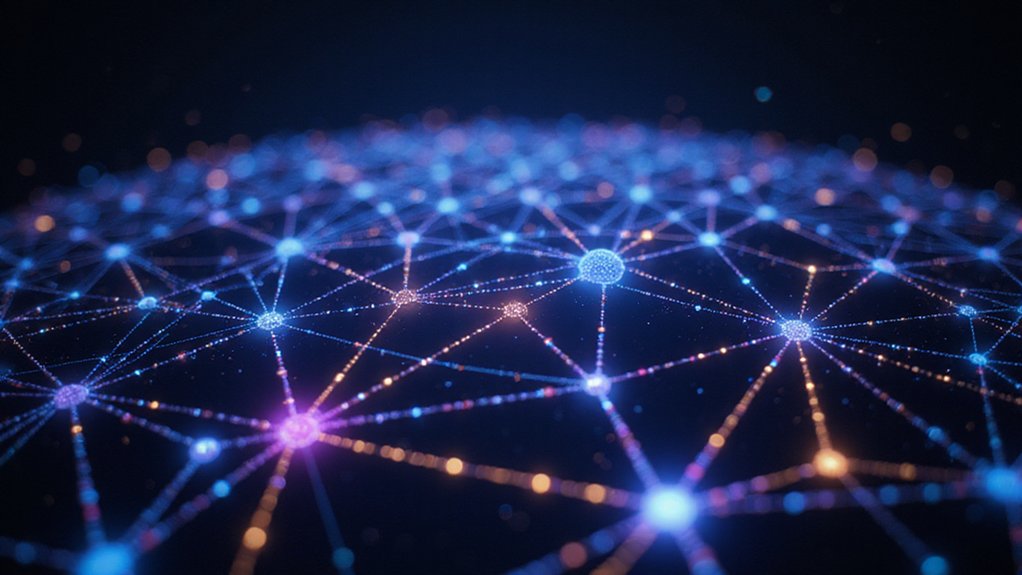
How often does one encounter a technology that genuinely threatens to upend the established order of artificial intelligence development?
In the case of Bittensor, we’re witnessing precisely such a paradigm shift—a decentralized blockchain network that transforms machine learning models into tradable commodities within a peer-to-peer marketplace.
At its core, Bittensor operates as an open-source protocol built atop the Subtensor blockchain, creating an ecosystem where AI development transcends the walled gardens of tech behemoths.
This digital agora functions through a constellation of specialized subnets, each addressing particular machine learning tasks (text generation, image recognition, et al.) while operating under the unified TAO token economy.
The network’s elegant design establishes two primary participation vectors: miners who develop and run AI models, and validators who assess the quality of these computational offerings.
This symbiotic relationship—miners submitting their work, validators ranking outputs—creates a meritocratic system where TAO tokens flow toward quality contributions. (One might observe that capitalism finally found its way into the neural networks themselves.)
What distinguishes Bittensor from conventional AI development frameworks is its inherent democratization of machine learning.
Rather than concentrating capabilities within corporate environments with their prohibitive computational requirements, Bittensor distributes both the burdens and rewards across a global participant base—effectively creating what proponents call a “digital hive mind.”
The network’s architecture facilitates a Mixture of Experts approach, where subnets collaborate to tackle complex challenges that singular models might struggle with. The system ensures bottom-up ownership of machine intelligence, placing control in the hands of contributors rather than centralized entities.
This interconnected structure accelerates AI advancement through collective effort rather than isolated competition. The platform optimizes AI tokens management to improve context understanding and computational efficiency across its distributed network. Users can stay informed about new Bittensor developments through exclusive offers delivered directly to their inbox via the newsletter subscription.
Frequently Asked Questions
How Secure Is Bittensor’s Network Against Attacks?
Bittensor’s network security presents a mixed picture, as evidenced by the recent $8M TAO token theft.
While possessing emergency controls that prevented further losses, the network demonstrated significant vulnerabilities—particularly in dependency management and key security protocols.
The two-month gap between malicious package infection and attack execution highlights concerning detection limitations.
Proposed improvements (package verification, hardware wallets, anomaly detection) suggest acknowledgment of these weaknesses, though implementation effectiveness remains to be seen.
Can I Participate Without Technical Blockchain Knowledge?
Yes, one can participate in Bittensor without extensive blockchain knowledge.
The network provides open-source tools, documentation, and step-by-step tutorials designed for newcomers.
While technical understanding certainly helps, the Bittensor SDK facilitates interactions between miners and validators, lowering the entry barrier.
Basic participation in existing subnets requires minimal blockchain expertise, though creating subnets demands more technical proficiency.
Active community support through Discord provides additional assistance for technically challenged participants exploring this decentralized AI marketplace.
What Are the Minimum Hardware Requirements for Running a Subnet?
Running a subnet demands substantial computational muscle, with minimum requirements including a 4-core CPU, 16GB RAM (though 32GB is strongly advised), and high-speed internet connectivity.
For miners specifically, hardware needs escalate considerably—powerful multi-core processors, NVIDIA RTX 3080 or superior GPUs, and at least 1TB SSD storage become essential.
These specifications vary by subnet purpose, with AI-focused subnets typically requiring more robust hardware than their less computationally intensive counterparts.
How Does Bittensor Compare to Other Decentralized AI Platforms?
Bittensor distinguishes itself from competitors through its integrated ecosystem combining AI model development, compute, and storage under a single protocol—a notable departure from platforms focused solely on tokenized rewards or compute sharing.
Its competitive subnet marketplace creates more dynamic incentives than donation-based models, while its open architecture permits broader participation than semi-centralized alternatives.
The network’s Mixture of Experts approach enables complex multi-step problem solving capabilities that many decentralized AI platforms simply cannot replicate.
What Regulatory Challenges Does Bittensor Face?
Bittensor faces a regulatory minefield that would make even seasoned fintech lawyers wince.
Key challenges include handling inconsistent cross-jurisdictional frameworks for cryptocurrencies, potential classification of TAO tokens as securities, and compliance with AML/KYC requirements that fundamentally conflict with its decentralized ethos.
Additionally, the platform must address emerging AI-specific regulations, data privacy concerns (particularly GDPR compatibility), and the ever-present risk that regulatory uncertainty itself dampens investor confidence and institutional adoption.
